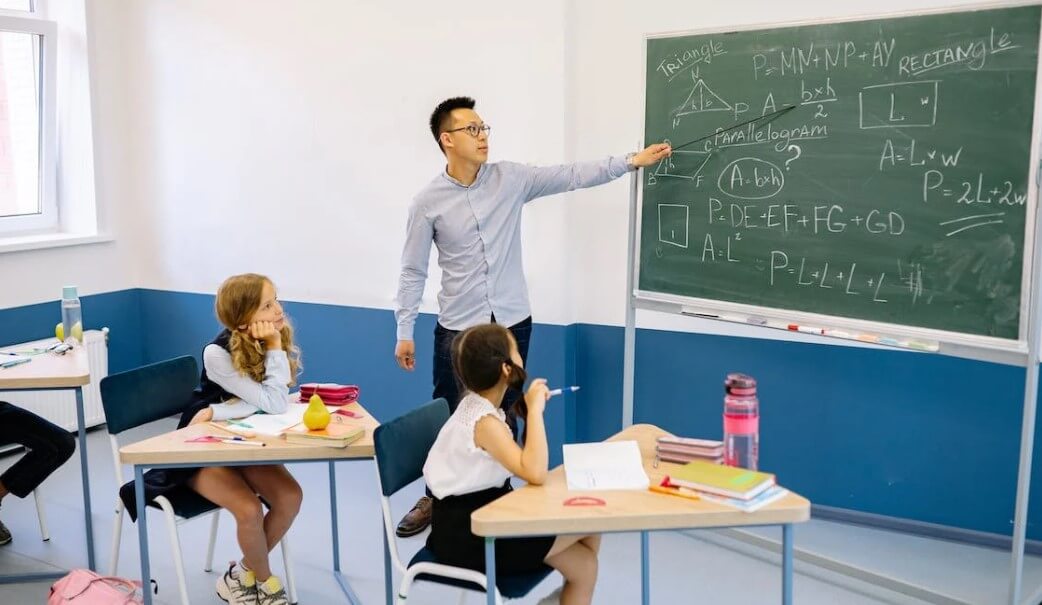Teachers can sometimes feel as if their words fall on deaf ears, and lesson planning is an absolute waste of time. An uninterested class that fails to participate and engage can crush the spirit of any educator, not to mention result in students with failing grades and administrators with serious concerns.
Cultivating an engaged classroom is one of the biggest challenges any teacher in education faces, and fortunately, there are a wide variety of proven strategies to get students focused and (dare we say) excited about the subject at hand.
If you feel hindered or discouraged when it comes to fostering an engaged classroom and getting active participants interested in learning, we have some practical guidance below to help you take control of the classroom and create an environment where students are eager to participate, share ideas, and be an active part of the dialogue through improved communication.
1. Make Participation an Expectation
One of the most important things teachers can do to ensure a class participates is simply letting it be known, from the outset, that participation is expected, welcomed, and encouraged.
Teachers sometimes forget how intimidating it is for students to participate, so a gentle yet firm reminder that you expect and welcome participation can go a long way in getting students involved.
Some students fear the repercussions of interrupting or think they should show their respect by remaining silent; let them know you want respectful participation and give specific examples.
Your willingness to veer off course just a bit to make room for engaging discussion will show students you are interested in what they have to say and want them to be engaged in collaboration. This remains a balancing act, of course, as teachers must steer the ship back on course when things go too far astray from the content.
Remind them, at the start of each lesson, that there is room for participation with whatever ground rules you set up regarding classroom etiquette.
2. Plan Meaningful Lessons
Another way to guarantee participation and an engaged classroom is by planning meaningful lessons. Organize your learning time to ensure there are platforms for instruction and collaboration for a better learning experience.

For many teachers, “bite-sized pieces” make all the difference. In other words, your lesson might include a short video, followed by instruction time and activities, followed by some Q&A.
The key is to use variety and small “snippets” of information at a time rather than a long lecture where students become bored and disengaged with the content. When you make your lessons more engaging, you inadvertently increase student participation because you have piqued their interest and gained their attention.
Other ways to create engaging lessons include communicating a learning purpose, setting the pace, and providing each student some time for reflection. A well-crafted lesson plan will help you ensure there is enough variety to keep the students excited about and invested in the material and any new concepts you introduce.
3. Getting to Know Your Students: An Introduction to Success
One often overlooked element concerning participation and student motivation is the individual student. What do you know about their likes and dislikes, hobbies and interests, families and backgrounds?
While it can seem daunting to dig into these details for 20 or even 30 students at a time, this time investment in their personalities can pay dividends in results.
For example, if Aiden is a baseball fanatic and you mention his favorite team in your lesson, he will immediately be more engaged. If you can incorporate Sadie’s success at her recent swim meet into a math lesson about timing, you will most certainly grab her attention (as well as those around her).
Students who feel respected and liked by their teachers are far more likely to participate and stay engaged, and sometimes it is as simple as remembering one thing they really love, be it a hobby, a singer, or a sports team.
4. If You Don’t Care, Why Should They?
Engagement in the classroom works both ways, and students can sense when teachers are uninterested in the topic. Your own engagement is crucial to capturing student engagement. Show the students why the subject matters with your passion and enthusiasm.

Whenever possible, an anecdote or personal story related to your instruction helps the students see why it matters to you and, ultimately, why it should matter to them. You might talk about how quick math helped you in a pinch at your first summer job as a retail clerk or how a novel grabbed your attention and kept you up past your bedtime as you could not put it down.
5. Change it Up to Keep Them Interested
Variety is the spice of life and certainly the spice of the classroom and the overall learning experience! If things become too predictable, student engagement may be difficult to maintain. But keeping them on their toes will keep them engaged in learning the subject matter.
While some sense of structure and order is important for learners, you should also ensure the lessons are diverse in style and content. Have the students act out a historic event rather than just reading about it from a text; ask students to make a short video presentation to share with the class or have them relate the subject matter to their own lives. Variety in their day-to-day tasks will help them to stay engaged in the classroom space.
6. Let Them Teach Each Other
Give the students a chance to break into small groups and engage with each other; sometimes, the students who are less inclined to participate in larger classroom discussions will truly shine in smaller group settings. Focus on mixing groups often so that students will learn in diverse settings, with peers whose backgrounds may differ from their own.
7. Celebrate Achievements
Finally, take every opportunity to celebrate achievements and progress to increase engagement and participation. This could mean celebrating as a class when everyone improves their weekly score on the pop quiz or making time to cheer for an individual student who has accomplished a goal, whether placing first in the county track meet or winning a poetry contest.

By celebrating achievements large and small, you reinforce to the students your interest in their successes both in and out of the classroom. Students who feel valued in this way are far more likely to participate and thrive in a highly engaged classroom.




